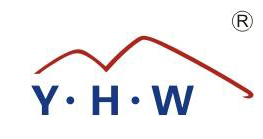Composite Metal Roofing, as a modern building material, is widely used in the construction field due to its multiple advantages. Whether it can effectively prevent the spread of fire and whether it is suitable for use in high-risk fire areas will be analyzed in detail below.
Composite metal roofing is usually composed of two or more layers of different metals or metal and non-metallic materials through a specific process. This structure gives it a variety of excellent properties, such as high strength, corrosion resistance, wear resistance, good thermal conductivity, etc. Among them, the metal substrate (such as aluminum, steel, etc.) provides the main structural strength and durability, while the surface coating or coating (such as polymer, ceramic, etc.) enhances its weather resistance, aesthetics and fire resistance.
The metal substrate in the composite metal roof is itself non-flammable and does not produce toxic gases or smoke even at high temperatures, which helps keep the air clean in a fire and provides favorable conditions for escape and rescue.
Metal has good thermal conductivity, which means that when a fire occurs, the heat can be quickly conducted through the metal roof, thereby reducing the indoor temperature and slowing the spread of the fire.
Many composite metal roofing tile products are equipped with special fire-resistant coatings, which can form a protective layer at high temperatures to prevent flames from directly contacting the metal substrate, thereby further improving its fire resistance.

Given the characteristics of composite metal roofing, such as non-flammability, good thermal conductivity and fire-resistant coating, it is very suitable for use in high-risk fire areas. These characteristics help reduce the damage to buildings caused by fire and protect the safety of people and property.
In many high-risk fire areas, such as forests, mountains or arid areas, composite metal roofing has been widely used in residential, commercial buildings and public facilities. These buildings have shown good fire resistance and stability in fires, verifying the applicability of composite metal roofing in high-risk fire areas.
In addition to fire resistance, composite metal roofing also has the following advantages:
Composite metal roofing can resist erosion from severe weather conditions (such as strong winds, heavy rains, hail, etc.), extending the service life of the building. Due to its excellent weather resistance and corrosion resistance, composite metal roofing requires less frequent maintenance, reducing maintenance costs. Composite metal roofing has a rich selection of colors and textures to meet different architectural styles and design needs.
Composite Metal Roofing can effectively prevent the spread of fire when used in high-risk fire areas due to its non-flammability, good thermal conductivity and fire-resistant coating. At the same time, it also has the advantages of strong durability, low maintenance cost and high aesthetics. Therefore, composite metal roofing is very suitable for promotion and application in high-risk fire areas. When selecting and using it, it is recommended to select appropriate composite metal roofing products according to specific needs and local climatic conditions, and follow relevant installation and maintenance specifications to ensure its optimal performance and safety.




 English
English русский
русский Español
Español عربى
عربى















